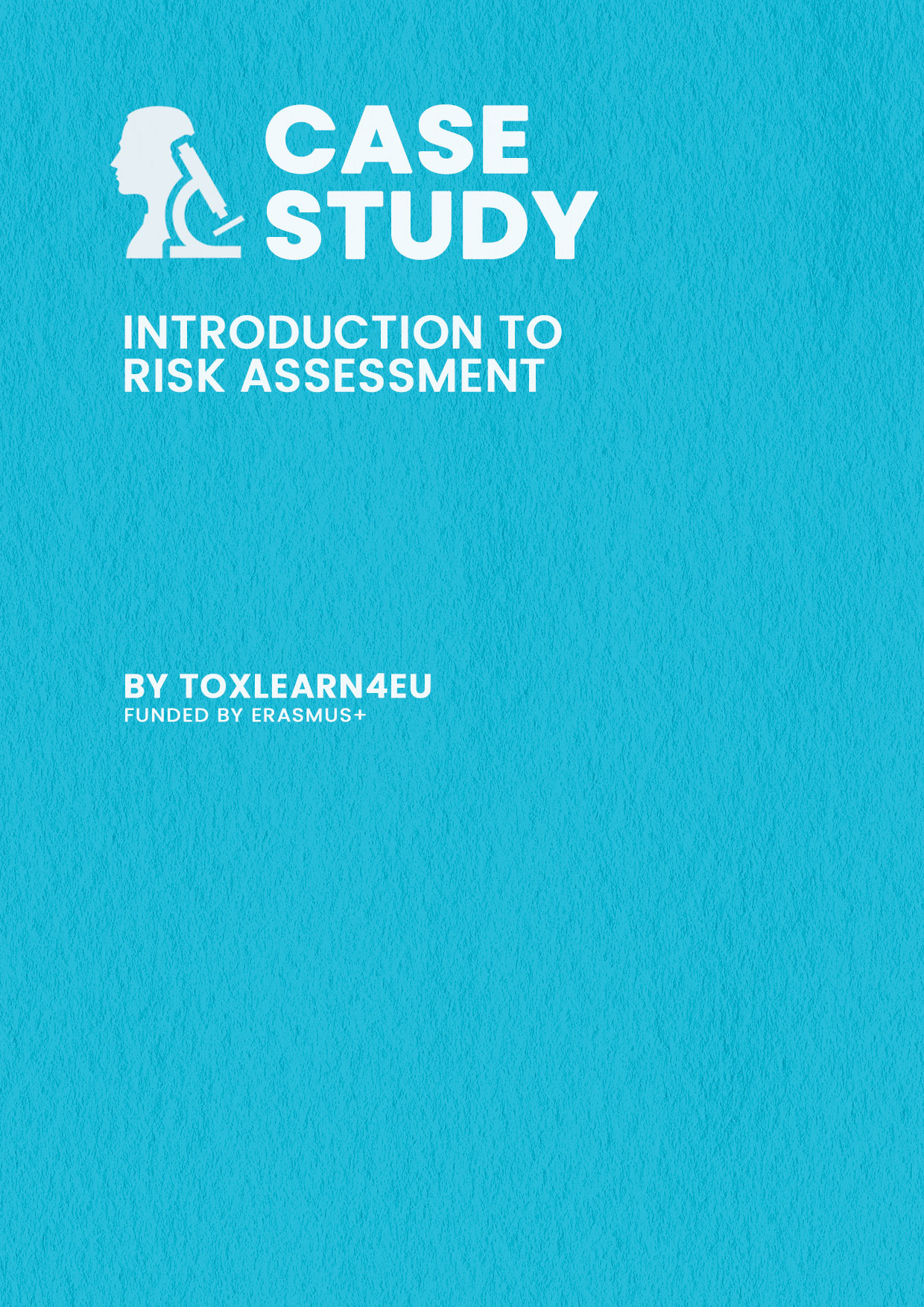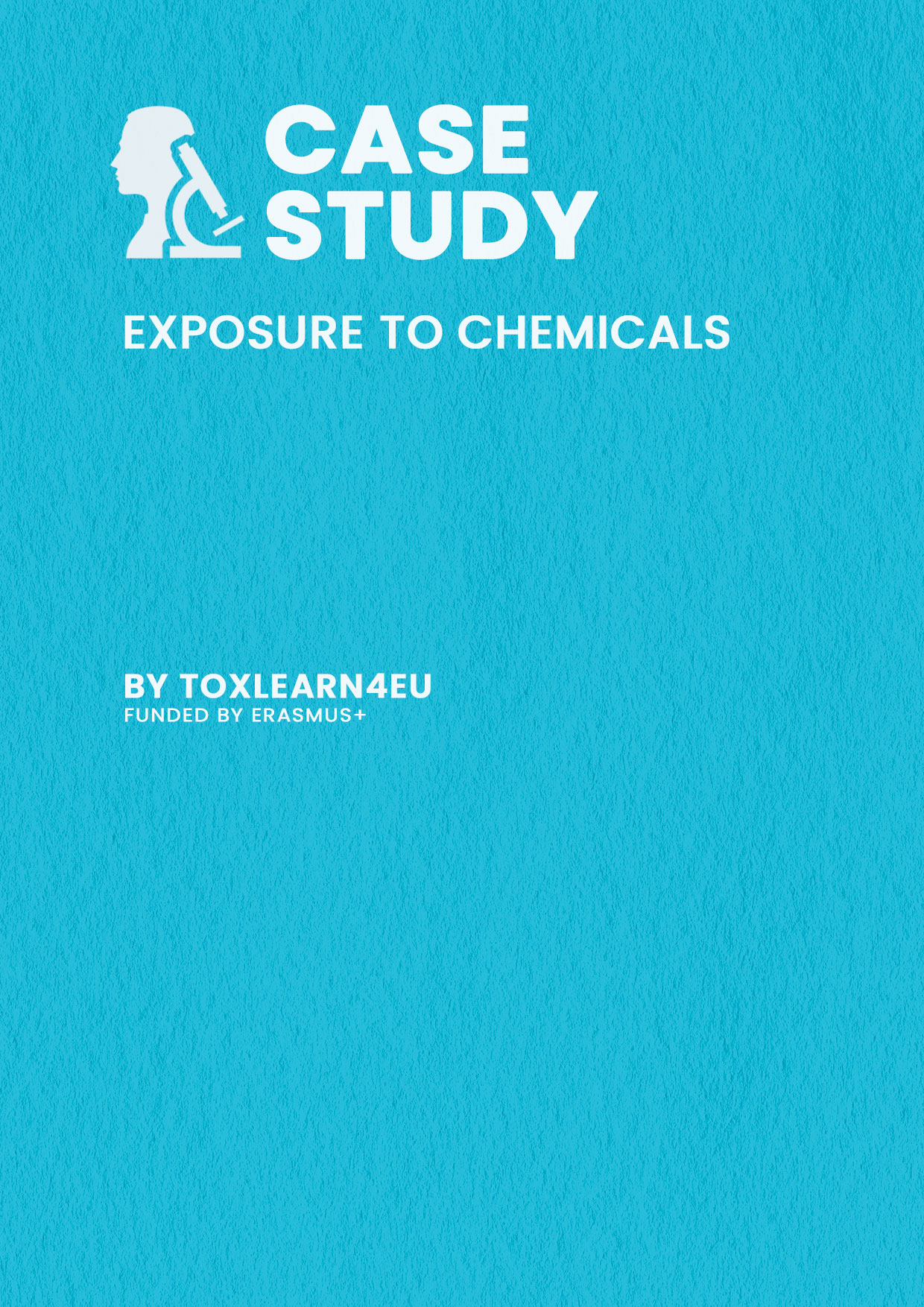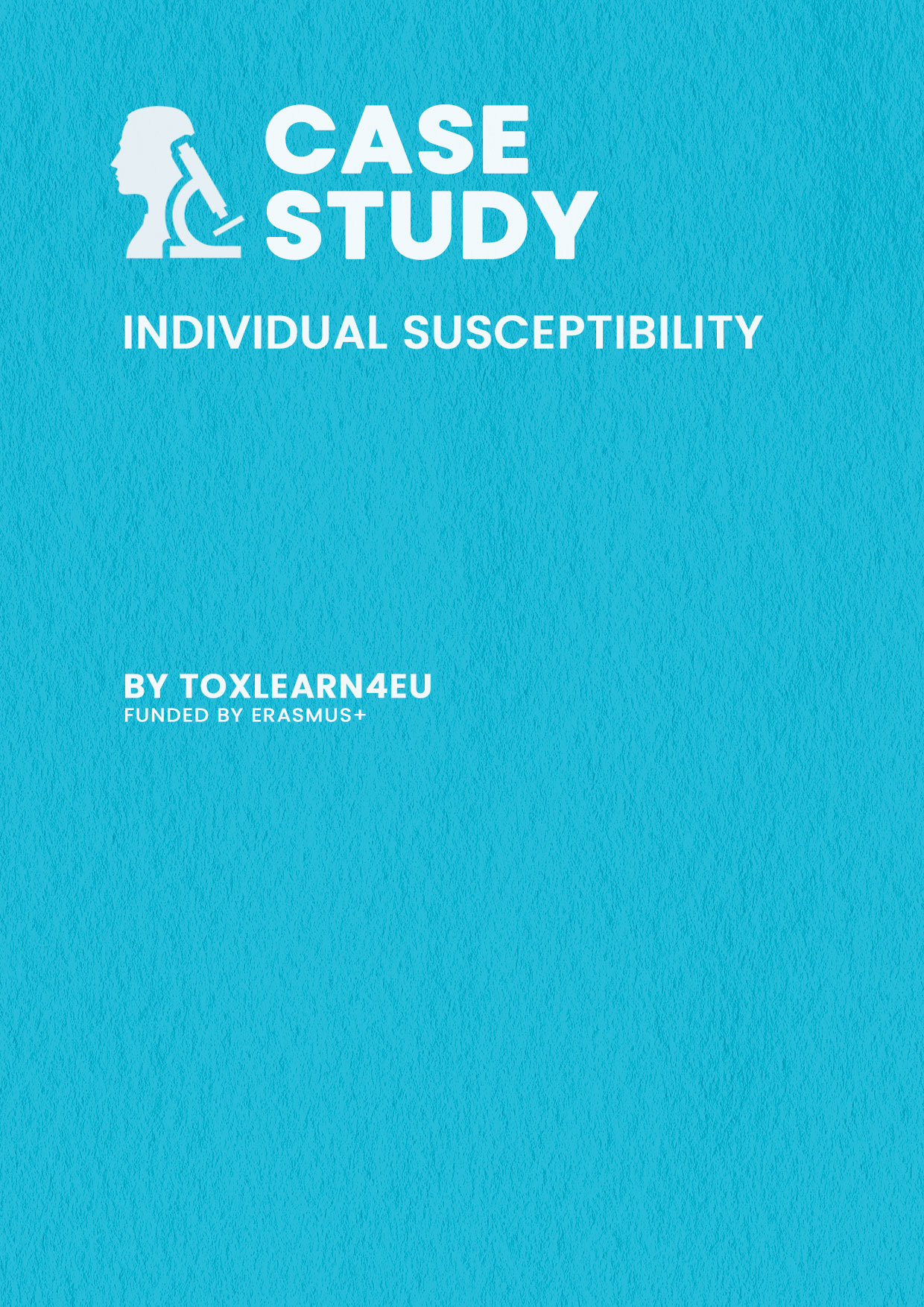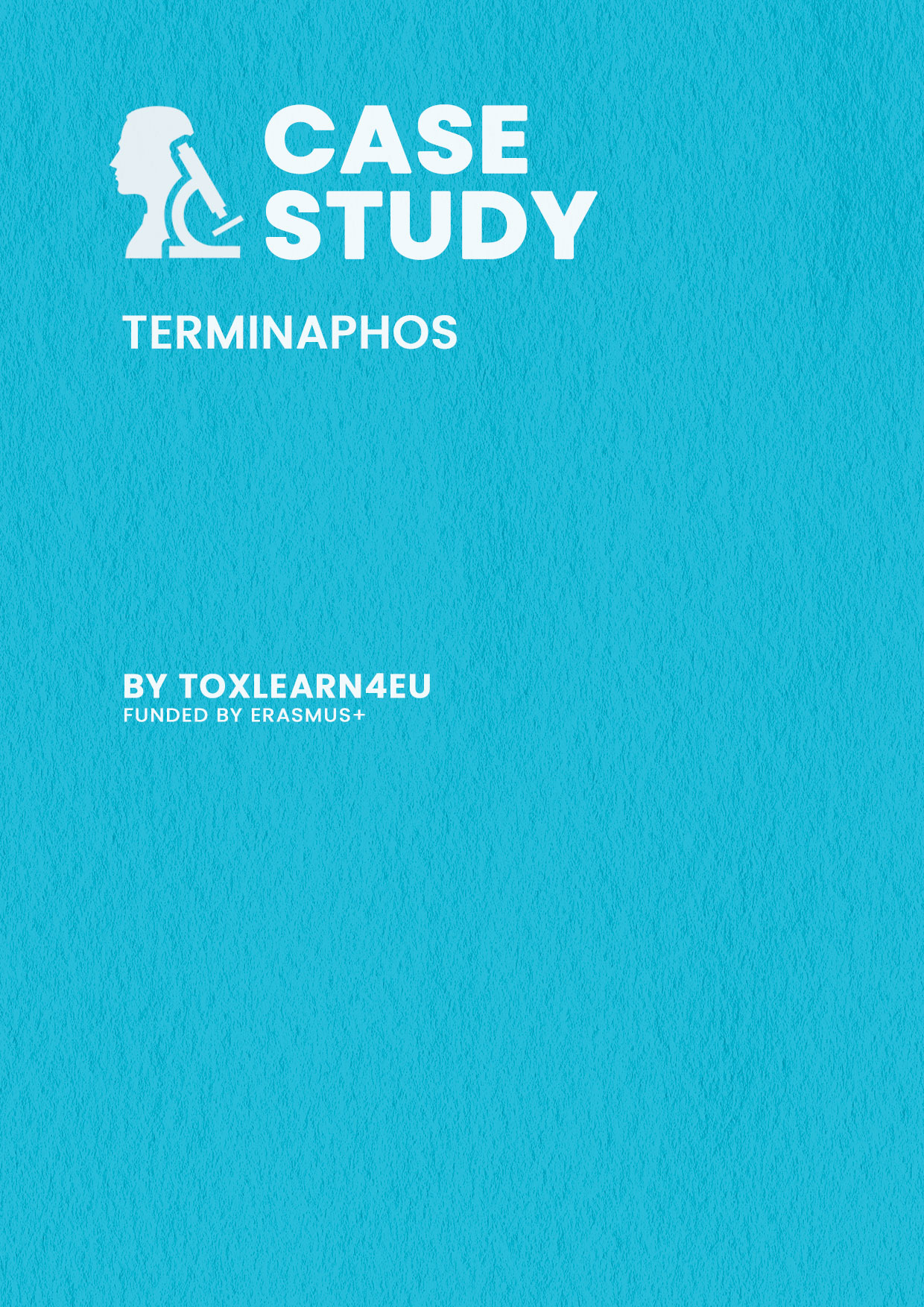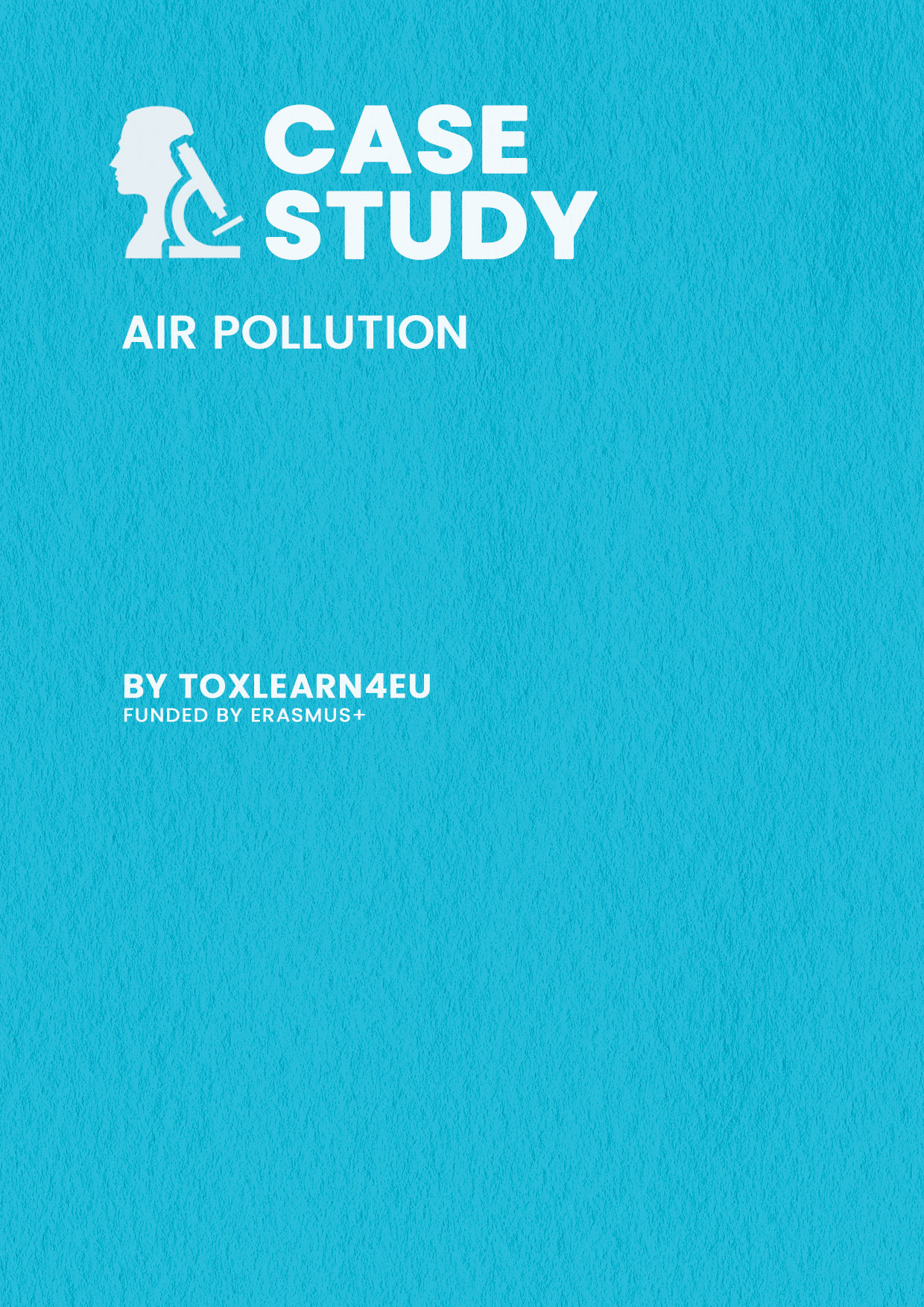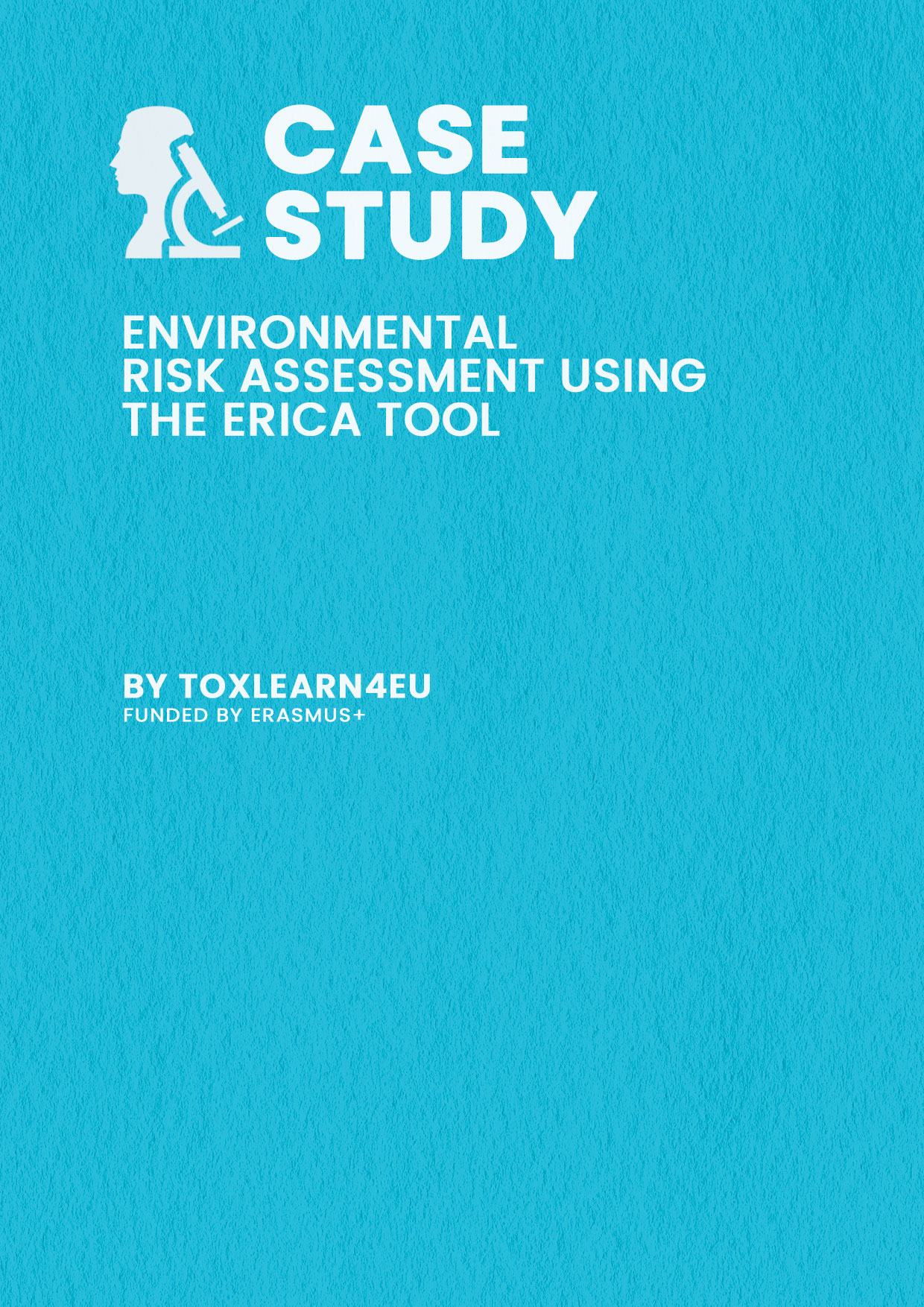RISK ASSESSMENT, POLICY AND RISK COMMUNICATION
Case Studies
INDEX
- Introduction to Risk Assessment
- Occupational Exposure to Hazardous Chemicals
- Food Safety and Public Health
- Exposure to Complex Mixtures
- Individual Susceptibility and Pharmacogenomics
- Environmental Risk Assessment of Pesticides: Terminaphos
- Urban Air Pollution and Community Risk Perception
- Environmental Risk Assessment of Radioactive Contamination Using the ERICA Tool
Introduction to Risk Assessment
This introductory problem-based learning (PBL) activity focuses on fundamental concepts in risk perception, assessment, and management. It is designed to help students understand how risks are identified, perceived by individuals and society, and managed through policy and communication strategies.
The case study encourages students to reflect on everyday situations that may involve health or safety risks—such as mobile phone use while cycling—and to analyse how individuals and governments respond to these risks. Students explore differences in personal risk perception and how this influences behaviour, drawing comparisons between countries and regulatory approaches.
Throughout the activity, students are introduced to a structured risk management model. They complete individual and group exercises, such as:
- Identifying risks in real-life scenarios based on images and personal experience;
- Ranking perceived risks using a matrix to compare likelihood and impact;
- Discussing differences in perception and cultural or legal responses;
- Analysing examples of public health policy, including cervical cancer screening protocols and water safety assurance.
This PBL scenario promotes critical thinking, collaborative learning, and a holistic understanding of how risk is addressed in public health and environmental contexts. It is an ideal starting point for students in toxicology-related programmes who are new to the concepts of risk assessment, policy development, and science-based communication.
Download complementary files:
(*) This file is for use by tutors/teachers and is password protected. If you are a tutor/teacher interested in using this case study, please contact us to get the password.
Occupational Exposure to Hazardous Chemicals
This PBL case study addresses chemical exposure in the workplace, focusing on the health risks faced by professional painters and the evolving regulatory responses aimed at protecting workers. Based on a realistic scenario, the case highlights both individual and institutional responsibilities in identifying, managing, and communicating chemical risks.
Students are introduced to Mr. Bax, a 52-year-old house painter who has worked with solvent-based paints for over three decades and is now experiencing symptoms such as dizziness and headaches. Despite occupational safety advice on proper ventilation, implementation was inconsistent. Following regulatory changes driven by health and environmental concerns, solvent-based paints have been replaced by safer water-based alternatives—yet complaints persist.
Students step into the role of a risk manager, Yannick, who is tasked with assessing chemical risks in the workplace. His investigation involves:
- Reviewing past practices and current regulations (e.g. Working Conditions Act);
- Consulting with occupational health professionals and employees;
- Considering previous cases involving hazardous substances (such as chromium-6 in military settings);
- Evaluating communication and prevention strategies within the organisation.
This PBL encourages students to explore:
- Risk identification and exposure assessment in real-life occupational settings;
- The impact of chemical regulation on professional practices;
- Ethical and scientific responsibilities in protecting worker health;
- Effective risk communication and organisational change.
It provides an ideal learning environment for students in toxicology, occupational health, or environmental sciences, while fostering critical thinking, policy literacy, and stakeholder engagement.
Download complementary files:
(*) This file is for use by tutors/teachers and is password protected. If you are a tutor/teacher interested in using this case study, please contact us to get the password.
Food Safety and Public Health
Foodborne illnesses are a significant concern for public health authorities, industries, and consumers alike. This PBL case study explores the challenges of detecting, managing, and communicating risks associated with microbiological and other types of food contamination.
The case begins with a provocative question—MacDeath?—inspired by a real-life outbreak of E. coli infections linked to fast-food burgers, which tragically resulted in at least one death. Students are invited to examine how such outbreaks are identified, how causality is determined, and what systems are in place to prevent future incidents.
Participants are encouraged to think critically about:
- The diversity of biological hazards in food (e.g. bacteria like E. coli, viruses like Norovirus, prions such as those involved in BSE, and mycotoxins from fungi);
- The complexity of tracing contamination sources and enforcing food safety protocols;
- The roles and responsibilities of health agencies, food producers, and regulatory bodies;
- The importance of risk communication in maintaining public trust and promoting informed decision-making.
This PBL scenario stimulates discussion around real and perceived risks, individual susceptibility, and societal reactions to foodborne hazards. It is ideally suited for students studying toxicology, food safety, microbiology, or public health, providing a realistic and interdisciplinary perspective on risk assessment and management in the food sector.
Download complementary files:
(*) This file is for use by tutors/teachers and is password protected. If you are a tutor/teacher interested in using this case study, please contact us to get the password.
Exposure to Complex Mixtures
This PBL case study focuses on one of today’s most pressing environmental health issues: exposure to complex mixtures of pollutants, specifically airborne particulate matter (PM). It challenges students to step into the role of a newly appointed health officer at a regional public health service in Maastricht (Netherlands), where residents living near a busy street express growing concern about air quality.
Students are tasked with organising a public information meeting to explain:
- What the government is doing to monitor air quality;
- How daily measurements of pollutants such as PM10, PM2.5, and nitrogen dioxide are carried out;
- How these values relate to health guidelines and legal thresholds;
- How to interpret health risks associated with repeated exposure to air pollution.
As part of their mission, students must also engage with the community to understand local perceptions of environmental risks and integrate this feedback using the “Risk Governance Framework.” This promotes a multi-stakeholder approach to managing complex risks in real-life scenarios.
Key learning outcomes include:
- Understanding the health implications of long-term exposure to air pollution;
- Interpreting environmental monitoring data and comparing it to regulatory standards;
- Applying risk communication strategies in a public health context;
- Using policy and governance models to improve environmental risk management.
This interdisciplinary case is ideal for students in toxicology, environmental sciences, public health, or risk policy, and invites them to tackle the challenges of real-world risk assessment and community engagement around complex chemical exposures.
Download complementary files:
(*) This file is for use by tutors/teachers and is password protected. If you are a tutor/teacher interested in using this case study, please contact us to get the password.
Individual Susceptibility and Pharmacogenomics
This thought-provoking PBL case explores how genetic variability in drug metabolism can lead to serious, even fatal, consequences. It highlights the importance of personalized medicine and pharmacogenomics in risk assessment, especially when it comes to vulnerable populations like newborns.
The case is based on the real-life death of an infant in Toronto from opioid toxicity, traced back to codeine use by the breastfeeding mother. Unbeknownst to her or her physicians, she was an ultra-rapid metabolizer of codeine due to carrying multiple copies of the CYP2D6 gene. This genetic trait led to dangerously high levels of morphine in her breast milk, ultimately causing the baby’s death.
Students are asked to analyze this case and address the following key themes:
- How genetic polymorphisms like CYP2D6 influence drug metabolism and toxicity;
- The role of pharmacogenetic testing in predicting individual susceptibility to adverse effects;
- Clinical and ethical implications of prescribing drugs without considering genetic variability;
- How other factors—such as diet, co-medication, or environmental exposures—may influence risk.
Part of the case includes data analysis: students evaluate CYP2D6 genotyping results from a group of university students, calculate phenotype distributions, and compare the data to expected frequencies from the literature. They are encouraged to explain potential discrepancies and reflect on the implications for public health and clinical decision-making.
This interdisciplinary PBL is ideal for students of toxicology, pharmacology, biomedical sciences, and public health. It encourages the integration of molecular biology, clinical toxicology, and ethical reasoning in the context of real-world health risks.
Download complementary files:
(*) This file is for use by tutors/teachers and is password protected. If you are a tutor/teacher interested in using this case study, please contact us to get the password.
Environmental Risk Assessment of Pesticides: Terminaphos
This problem-based learning (PBL) case introduces students to the tiered approach used in Environmental Risk Assessment (ERA) for plant protection products, as recommended by the European Food Safety Authority (EFSA). It simulates a real-world regulatory context in which a new pesticide—Terminaphos®—is proposed to combat Colorado potato beetles (Leptinotarsa decemlineata) that have developed resistance to conventional treatments in Southern Belgium.
Students are asked to assess the environmental impact of Terminaphos® using a stepwise methodology:
- Tier 1: Screening-level risk assessment based on physicochemical properties, core toxicity, and exposure data;
- Tier 2: Probabilistic approach using species sensitivity distributions (SSDs);
- Tier 3: Higher-tier assessment based on mesocosm (field-like) experiments.
Working in stakeholder groups with different perspectives (e.g. regulators, industry, farmers, NGOs), students must analyze the available data, debate the risks and benefits, and reach a decision about whether Terminaphos® should be authorized. The scenario also allows for the integration of socio-economic and geopolitical considerations alongside scientific data.
Key learning outcomes:
- Understand the physicochemical and ecotoxicological properties of pesticides;
- Evaluate experimental data from lab and field-based studies;
- Apply tiered risk assessment frameworks following EFSA guidance;
- Explore the role of stakeholder input and socio-economic context in regulatory decision-making;
- Develop critical thinking, data interpretation, teamwork, and science communication skills.
This interdisciplinary PBL is ideal for students in toxicology, ecotoxicology, environmental sciences, and regulatory affairs. It provides both scientific rigor and policy relevance in addressing the environmental challenges posed by pesticide use.
Download complementary files:
Urban Air Pollution and Community Risk Perception
This project-based learning (PBL) case offers students an in-depth and open-ended exploration of environmental health risks associated with air pollution in urban settings. Inspired by a fictional but realistic citizen complaint—a letter from a resident of The Hague concerned about traffic-related air pollution—students are invited to investigate the scientific, societal, and policy dimensions of a complex environmental issue.
Unlike traditional short-form PBL, this case follows a project-based approach, encouraging students to structure their own inquiry, manage their timeline, and define their investigative pathway. The scenario unfolds around a letter sent to the Dutch National Institute for Public Health and the Environment (RIVM), requesting action on worsening air quality near a busy street and waterway.
Students are expected to explore:
- Methods of air pollution monitoring (e.g. NO₂, PM2.5, PM10, carbon black);
- Health impacts of short- and long-term exposure;
- Regulatory thresholds and international guidelines;
- Population susceptibility (e.g. children, elderly, people with respiratory conditions);
- Differences between perceived and actual risk;
- Potential mitigation strategies, including new policies like zero-emission zones.
The project supports key learning outcomes in environmental toxicology, public health, and science communication:
- Critical thinking and problem-solving around real-world environmental challenges;
- Integration of scientific evidence with public concerns and policy frameworks;
- Independent research skills and collaborative project management;
- Development of professional competencies through written reports or presentations.
Tutors serve as facilitators, helping students navigate the complexity of the task without prescribing each step. This flexible and student-led format fosters autonomy, creativity, and real-world engagement.
Download complementary files:
(*) This file is for use by tutors/teachers and is password protected. If you are a tutor/teacher interested in using this case study, please contact us to get the password.
Environmental Risk Assessment of Radioactive Contamination Using the ERICA Tool
This advanced PBL case study introduces students to environmental risk assessment (ERA) methodologies for radioactive substances, with a focus on the ERICA Tool (Environmental Risk from Ionising Contaminants: Assessment and Management). Based on realistic but fictionalised data, it simulates the impact of discharges from a nuclear power plant into a river ecosystem.
Students are tasked with performing tiered risk assessments using predicted and measured concentrations of radionuclides in various environmental compartments (water, sediment, biota). The scenario includes protected aquatic species (e.g. Atlantic salmon, eel, bullhead) and terrestrial wildlife (e.g. badger, stonechat, bat) that may be affected by sediment deposition along the riverbank during dredging.
Learning tasks include:
- Tier 1 assessment using conservative assumptions and predicted environmental concentrations;
- Tier 2 assessment for aquatic and terrestrial ecosystems, integrating measured data and ecosystem characteristics;
- Modelling of radionuclide transport and concentration downstream using the ERICA river model;
- Estimating internal and external radiation doses to reference organisms;
- Evaluating the potential long-term ecological impacts of low-dose radioactive exposure.
Students must interpret extensive datasets (e.g. radionuclide concentrations, partition coefficients, concentration ratios) and apply ERA concepts in a structured, evidence-based manner. The case fosters key skills in:
- Radiation protection and radioecology;
- Ecotoxicological data interpretation;
- Use of modelling tools like ERICA in real-world contexts;
- Multidisciplinary problem-solving and decision-making.
This PBL case is ideally suited for advanced students in environmental toxicology, radiation protection, and ecological risk assessment, particularly those training for roles in regulatory science or environmental consultancy.
Download complementary files:
- ERICA Tool Introduction
- ERICA Tool 2.0
- ERICA Tool Help
- ERICA Tool Research Paper
- ERICA Demonstration & Practical

